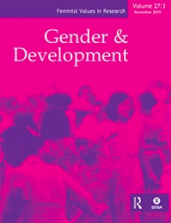Adolescent girls’ experiences of violence in school in Sierra Leone and the challenges to sustainable change

Overview
Gender based violence in or around schools continues to be a serious and pressing problem in Sierra Leone that necessitates greater attention. At the core of such violence is gender inequality that is pervasive in Sierra Leone society. School related gender-based violence is part of a complex, multi-faceted social issue. As microcosms of wider society, schools are spaces where entrenched gender roles and power dynamics are played out. This article explores what is working to reduce gender-based violence in junior secondary schools in Sierra Leone, focusing in particular on Plan UK’s Building Skills for Life project. The project focuses on supporting the empowerment of adolescent girls through a life cycle approach, focusing on four core areas: the attainment of a quality basic education, freedom from violence, economic empowerment, and the enjoyment of sexual and reproductive health and rights. While recognising that gender-based violence is an issue for both girls and boys in schools, it focuses on the factors that make adolescent girls particularly susceptible to violence and looks at the on-going challenges to reducing gender-based violence in schools and the wider community.
This article is hosted by our co-publisher Taylor & Francis. For the full table of contents for this and previous issues of this journal, please visit the Gender and Development website.
Keywords
Additional details
Author(s)
How to cite this resource
Citation styles vary so we recommend you check what is appropriate for your context. You may choose to cite Oxfam resources as follows:
Author(s)/Editor(s). (Year of publication). Title and sub-title. Place of publication: name of publisher. DOI (where available). URL
Our FAQs page has some examples of this approach.


